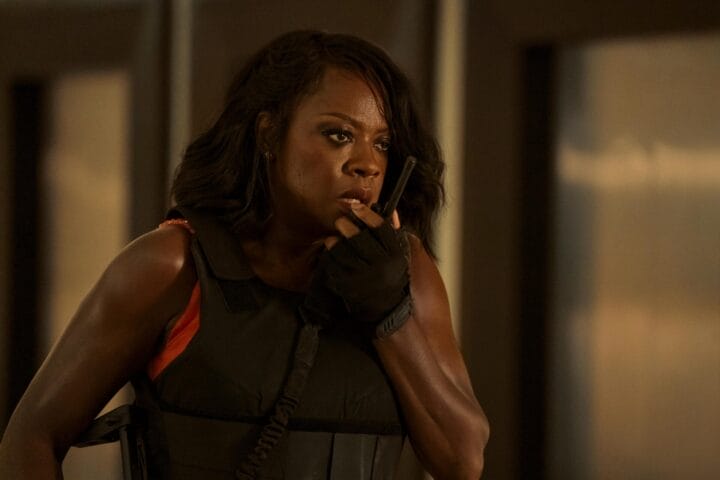Zack Snyder has long been a polarizing figure in the world of filmmaking, with a unique style that sets him apart from many of his contemporaries. Known for his visually stunning films and his ability to bring comic book stories to life on the big screen, Snyder has crafted a career that has both enchanted and divided audiences. Whether you love him or hate him, there’s no denying the impact Zack Snyder has had on the cinematic landscape. In this blog post, we delve into the artistry of Zack Snyder’s movies, examining the distinctive elements that define his work.
The Visual Style That Sets Him Apart
Zack Snyder is celebrated for his distinctive visual style, which merges striking imagery with dynamic action sequences. His adept use of slow motion, high-contrast lighting, and meticulously crafted compositions generates a heightened sense of drama and intensity. This stylistic approach is evident in the visually captivating landscapes of “300” and the gritty realism of “Watchmen.” Snyder’s visual storytelling is not just for show; it serves to amplify the emotional and narrative weight of his films, immersing viewers in a world that is as compelling as it is unforgettable. His ability to create stunning visuals is a fundamental aspect of his artistry. Snyder’s films often feature hyper-stylized scenes that blur the line between reality and fantasy, engaging audiences on multiple sensory levels. Whether through the sweeping vistas of ancient battles or the intricately detailed urban landscapes, his visual choices are deliberate and impactful. The careful attention to detail in costume design, set pieces, and cinematography further enriches the viewing experience, making each frame a work of art. This meticulous craftsmanship ensures that every visual element contributes meaningfully to the story, creating a cohesive and immersive cinematic experience.
Masterful Adaptations of Comic Book Lore
Zack Snyder’s most significant contributions to the film industry include his exceptional adaptations of comic book lore. His deep understanding of the source material, combined with a genuine passion for the genre, allows him to bring these stories to life in ways that are both authentic and innovative. In “Man of Steel,” Snyder presents a nuanced portrayal of Superman, delving into the hero’s internal struggles and the moral complexities of his role. “Batman v Superman: Dawn of Justice” continues this trend by exploring the darker, more conflicted sides of these iconic characters. Snyder’s dedication to staying true to the core themes of the original comics is evident, yet he also infuses his films with his unique creative touch. His adaptation of “Watchmen” is another testament to his ability to handle intricate storylines and multifaceted characters, maintaining the essence of the graphic novel while translating its dense narrative into a compelling visual format. By striking a balance between loyalty to the source material and his visionary style, Snyder manages to craft films that resonate deeply with fans of the comics while also captivating a broader audience. His work stands as a benchmark in the realm of comic book adaptations, showcasing his skill in blending narrative depth with stunning visual storytelling.
Narrative Themes and Character Development
Zack Snyder delves into profound narrative themes and intricate character development in his films. He often explores the complexities of the human condition, tackling subjects such as heroism, sacrifice, and redemption. For example, in “Man of Steel,” Snyder delves into Superman’s identity crisis and the moral weight of his extraordinary powers, offering a nuanced portrayal of the iconic hero. Similarly, “Sucker Punch” navigates themes of empowerment and escapism, set against a visually imaginative backdrop. Snyder’s characters are frequently portrayed with layers of depth and imperfection, inviting audiences to connect with them on a more intimate level. Batman, in “Batman v Superman: Dawn of Justice,” is depicted as a haunted and morally ambiguous figure, grappling with the loss and trauma that shape his vigilante mission. This multifaceted approach to character development allows Snyder to present heroes and anti-heroes in a light that is both relatable and thought-provoking. His storytelling goes beyond conventional action sequences, incorporating rich backstories and emotional arcs that resonate with viewers. In “Watchmen,” Snyder tackles the existential and philosophical dilemmas faced by its characters, particularly Dr. Manhattan, whose godlike powers isolate him from humanity. Through these narrative choices, Snyder’s films offer more than just visual spectacle, providing a deeper exploration of the themes that define his unique artistic vision.
The Impact of Zack Snyder’s Justice League
“Zack Snyder’s Justice League” represents a significant milestone in his career and the broader film industry. Released in 2021, this director’s cut of the 2017 film emerged after a fervent fan-driven campaign demanding to see Snyder’s original vision. The four-hour version provided a more comprehensive narrative, complete with enriched character arcs and sophisticated visual effects that were absent in the theatrical release. The film’s debut not only showcased Snyder’s unwavering commitment to his artistic vision but also underscored the potential influence of fan advocacy in Hollywood. This event sparked widespread discussions about creative control, artistic integrity, and the importance of allowing filmmakers to present their work as intended. The release of “Zack Snyder’s Justice League” demonstrated how fan dedication and persistence could impact the film industry, challenging traditional studio decisions and paving the way for more director-driven projects. Through this film, Snyder reaffirmed his place as a pivotal figure in contemporary cinema, willing to take risks and push the boundaries of storytelling.
Collaboration with Composers and Sound Design
Zack Snyder’s films are known for their powerful synergy between visual spectacle and auditory experience, and this is largely due to his collaborations with composers and sound designers. The music and soundscapes in Snyder’s movies serve to elevate the emotional and thematic elements, creating an immersive experience for the audience. Snyder’s partnership with Hans Zimmer and Junkie XL, for instance, has produced some of the most iconic soundtracks in recent cinema. The sweeping orchestral scores in “Man of Steel” and the intense, pulsating rhythms of “Batman v Superman: Dawn of Justice” not only complement the on-screen action but also add depth to the characters’ emotional journeys. Snyder’s meticulous attention to sound design is evident in his use of ambient noises and carefully selected musical cues to enhance the narrative. In “Watchmen,” the juxtaposition of 80s pop hits with a dystopian backdrop adds a layer of irony and commentary, enriching the viewing experience. The sound design in his films often works in tandem with the visual elements to create a holistic sensory experience that is both engaging and evocative. By weaving together striking visuals and compelling audio, Snyder ensures that his films resonate on multiple levels, making them not just visually but also aurally memorable.
The Influence of Mythology and History
Zack Snyder’s films often weave elements of mythology and history into their narratives, infusing his stories with a sense of gravitas and timelessness. In “300,” for example, Snyder brings to life the ancient Battle of Thermopylae, blending historical events with a stylized visual approach that emphasizes the legendary aspects of the Spartan warriors. This fusion of history and myth elevates the story, transforming it into an epic tale of heroism and sacrifice. Similarly, Snyder’s use of mythological archetypes is evident in his portrayal of characters like Superman and Dr. Manhattan. Superman’s journey in “Man of Steel” parallels that of a messianic figure, exploring themes of destiny, sacrifice, and hope. Dr. Manhattan in “Watchmen,” on the other hand, embodies the godlike detachment and existential dilemmas faced by beings of immense power, drawing from mythological and philosophical traditions. Snyder’s ability to draw on these timeless themes and symbols allows his films to resonate on a deeper, more universal level. By incorporating elements of mythology and history, he creates narratives that are rich in meaning and cultural significance. This approach not only enhances the storytelling but also connects modern audiences with age-old tales of heroism, power, and the human condition, making his work both thought-provoking and enduring.
Criticisms and Controversies
Zack Snyder’s career, while illustrious, has not been without its fair share of criticisms and controversies. Some critics argue that his films can be overly stylized, with a heavy reliance on visual effects and slow-motion sequences that may detract from the narrative flow. Others contend that his darker and more mature interpretations of iconic superheroes diverge too much from the traditional portrayals, creating tension among purists who favor a more classic approach. Moreover, Snyder’s storytelling choices, which often include complex themes and morally ambiguous characters, have sparked heated debates within the fan community. While some praise his willingness to explore deeper, more philosophical issues, others feel that these elements can sometimes overshadow the entertainment value of his movies. Despite the divided opinions, it’s clear that Snyder’s bold approach to filmmaking has made him a standout figure, one who is not afraid to challenge conventional norms and provoke thought. In the end, the controversies surrounding Zack Snyder’s work highlight the strong emotions and discussions his films generate, underscoring his significant impact on the industry and the audiences who passionately engage with his vision.













